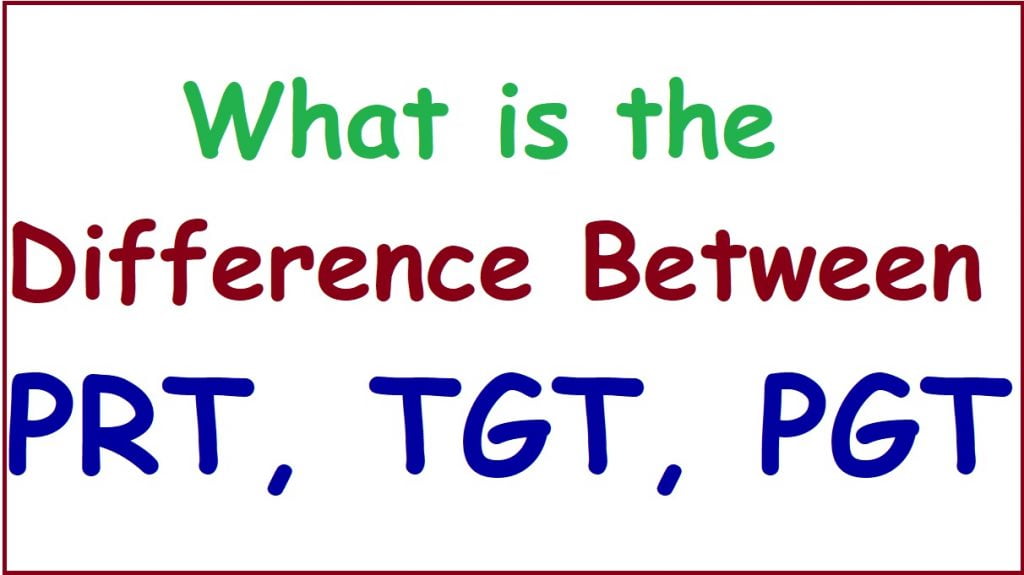Besides the educational aspects and class learning activities. Teachers hold a significant role in the student’s life. A teacher has the power to build character or destroy a child’s inner spirit. They help shape children’s morals, personalities, and career life of every child. A huge percent of people’s lives are characterized by the morals and aspects instilled by their teachers. This ranks a teacher as a noble profession globally. Full Form of PRT & PGT, TGT Given below.
Education is valuable in India, with ancient parents introducing their children to Gurukuls. The Guru (teachers) impacted essential knowledge and life skill to ensure all children grow in the right ways. Back then, all children remain the same and received teaching equally. The high place/Kings valued and honored teachers, allowing them to sit at the thrones when they visited.
Today teachers hold the same significance. Most young people prefer the profession and work through college and University levels to attain teaching diplomas, degrees, and higher certification. Every teacher must qualify in a recognized institution before acquiring jobs at various schools in India. This helps to avoid teaching the wrong system or misguiding the students.
Full Form of PGT, TGT & PRT

There are different levels of qualifications and designations, such as PRT, TGT, and PGT. The acronyms mean:
- PRT: Primary Teacher
- TGT: Trained Graduate Teacher.
- PGT: Post Graduate Teacher.
Teaching levels for the PRT, TGT, and PGT
- The PRT teachers take class I-V
- TGT teachers can teach class VI-VIII
- PGT teachers teach class IX-XII.
Eligibility Criteria for PRT, TGT, PGT
TGT
- The maximum age limit for TGT teachers should be 35 years.
- One should have an “A” or graduate degree from known education boards or institutions.
- The teachers in the category teacher the following subjects:
- English
- Mathematics
- Science
- History
- Economics
- Local language
- Geography.
PGT
- The teacher should be postgraduate or hold an M.SC course from recognized Institutions of Education.
- Have a master’s degree from a renowned University pass with 50% of the aggregate marks.
- The PGT teacher should be fluent/proficient in English and Hindi.
- B.ED degree from a recognized university.
PRT
- The teacher should have the ability to handle all subjects.
- The maximum age limit for PRT studies is 30 years.
- Teachers in the PRT should be proficient in English and Hindi.
- Pass in 10+2 grades or 50% marks in aggregate
- Subjects for PRT
- English
- Hindi
- Science
- Mathematics
- Social science
- Engineering
- Literacy
- Numeracy
Primary Teacher (PRT)
A qualified PRT teacher undertakes the elementary and primary students (class 1-5). For one to qualify for the position. The teacher should have a Diploma in Elementary Education (D.E.I.ED). The course goes for two years, where one can opt for full-time classes or distance learning. The two years are divided into four semesters. India has many credited colleges and universities that offer a Diploma in Elementary Education.
Trained Graduate Teacher (TGT)
A TGT teacher is eligible to teach up to class q\10th standard. One must qualify with a B.ED, which is a two years course. Indian private and government institutions offer the course both in full-time and distance learning. Teachers need to take an entrance examination before applying for the B.ED course. Again, one must complete graduating from any of the required streams in a university or college recognized by the UGC. The TGT teacher is equipped with different skills to handle children of various characters, languages, abilities, and more.
The teacher needs to be diversified to ensure they deliver every need based on each child. The course covers the following details.
Post Graduate Teacher (PGT)
The PGT teacher has the privilege to teach classes up to the 12the standard. A PGT teacher must provide the Post Graduate Degree before taking the B.ED course. This is different with TGT applicants who take the B.ED after graduation. The course entails the following:
Examination Bodies for the PRT, TGT, and PGT courses:
- Central Board of Secondary Education. (CITET)
- Kendriya Vidyalaya Sangathan.(KVS)
- Navodaya Vidyalaya Samiti (NVS)
- Delhi Subordinate Service Selection Board (DSSSB)
Objectives of the Programs
- The education courses help the participants develop leadership skills, problem-solving skills, and handle different characters.
- Help the candidate learn and familiarize with teaching skills.
- The program’s teachers pass quality talents, skills, and knowledge to students.
- Learn the right and fundamentals of children.
- To empower candidates and improve the education system in the country through proper delivery of education.
FAQs
What is the meaning of PRT, TGT, and PGT?
PRT: means Primary Teacher
TGT: Trained Graduate Teacher
PGT: Post Graduate TeacherWhich are the primary language every teacher should be proficient in?
The teachers in all categories should be proficient in English and Hindi.
PRT Full form?
Primary Teacher (PRT)
TGT Full Form?
Trained Graduate Teacher (TGT)
PGT Full Form?
Post Graduate Teacher (PGT)